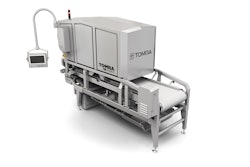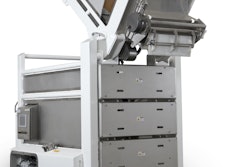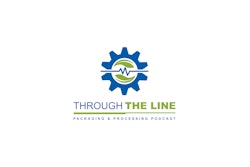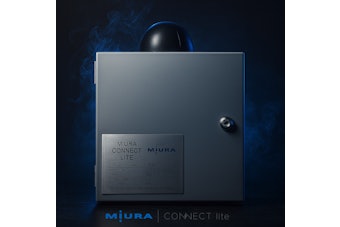While most liquid dairy products are still traditionally packaged in cartons or HDPE bottles, PET bottles are gaining momentum. According to Sidel, the France-based global packaging company, PET bottles offer the food safety and aseptic benefits of cartons and HDPE bottles, but provide better marketing opportunities and shelf differentiation while leveraging a cost-effective and flexible production process in comparison to their conventional carton and HDPE counterparts. ProFood World caught up with Guillaume Rolland, vice president of sensitive products at Sidel, to learn more about the potential and growing impact of PET in the liquid dairy market.
Do you see an increasing PET adoption trend in the liquid dairy products market?
Globally, the use of PET as a packaging material is expected to continuously grow within the liquid dairy sector. Traditionally packaged in carton or HDPE containers, liquid dairy products bottled in PET are forecasted to grow by 4.4 percent in the period from 2018 to 2020, [according to Euromonitor]. With 13.7 billion package units today, PET-packaged products are estimated to reach 14.9 billion units worldwide in 2020. The adoption of PET started in Europe nearly 20 years ago and has been deployed worldwide now for chilled and ambient distribution drinks, UHT milk, flavored milk and soy milk. The trend is even bigger around on-the-go formats than around family formats. In fact, the bottle sizes up to 500 mL represent more than two-thirds of those PET packages, meaning 8.3 billion units in 2018, projected to reach 9.6 billion units in 2020, [according to Euromonitor].
What are some of the main reasons PET is growing more popular in this segment?
When packaging liquid dairy products like white milk, flavored milk, enriched milk, plant milk, soy milk or drinking yogurt, multiple variables can influence their quality, including micro-organisms, light, oxygen and temperature. The PET growth can be credited especially to this packaging material’s 100 percent recyclability, its excellent barrier properties, and its neck and cap tightness that ensures food safety. Moreover, from transparent to opaque solutions, PET packaging alternatives can ensure top product protection and quality, while delivering the expected shelf life without the need for aluminum foil for a more sustainable business.
With light and oxygen affecting milk- and plant-based drinks, how can PET ensure a safe product?
PET barrier solutions ensure product safety across the supply chain with good oxygen barrier properties, 15 to 30 times higher compared to monolayer and three-layer HDPE. Regarding light protection, this is achieved through different preform manufacturing technologies and their light-blocking capabilities. One of them is the injection of monolayer preform, using a standard injection tool system and mixing PET material with a master batch from various suppliers. The other one is the multilayer preform, which can be produced using either over-molding or co-injection technologies. Those barrier solutions are adjustable in terms of additives and weight according to product recipe, bottle size and the desired extended shelf life to be achieved.
Across the globe, we see a trend toward functional and health-oriented drinks in different packaging with varying sizes. How can PET effectively address this trend and help meet changing customer demands?
For any product type or package format released on the market, PET packaging gives the opportunity to attract consumers with great brand differentiation due to the bottle design freedom offered by the injection stretch blow-molding technology and by the inherent and geometric properties of the PET raw material itself. Round or square, asymmetric or with specific handling, its high marketing potential opens up virtually unlimited possibilities to design whatever premium or affordable package. While providing a unique communication platform for brands that are increasingly using labels or the container itself to engage with their consumers, PET bottles are also allowing users to see the content inside, thanks to their transparency. Easy to open and handle, it is a functional and convenient type of package leading to a great consumer experience.
As market demands are quickly changing, shifting from standard bottle sizes toward smaller packages, PET offers sheer endless possibilities to enhance production flexibility with simple and easy changeovers on the production line while refreshing the brand with a complete bottle family from large to on-the-go formats.
To manage the booming product diversification and SKU proliferation, how can dairy players benefit from flexible and cost-effective PET bottling production?
In this industry, production flexibility is particularly key in terms of product recipes, bottle formats and shapes, cap and label applications — all of that without compromising on high line efficiency over time. For example, low- and high-acid products can be bottled on the same Sidel Aseptic PET packaging line, from 0.2 L to 2 L formats. Bottles can be sealed with standard flat caps or sport caps from 28 mm to 38 mm, including the possibility to add specific over-caps to further differentiate the bottles. To ensure a reliable and efficient production, the line is designed to offer maximum flexibility with reduced downtime for product changeovers, and a simple three-hour cleaning and sterilization period between bottle-to-bottle productions.
Working as a versatile marketing tool, PET bottles offer many possibilities when it comes to decoration. On top of roll-fed labels or sleeve labels, a complete sleeve covering the cap can also be used, increasing the communication-facing surface. The same bottle shape can be customized with different cap colors and label decorations in order to easily multiply the SKUs with minor changes in the production process.
Where do you see potential for cost-effective and eco-friendly production?
Starting from a raw material perspective, PET is the most affordable plastic available on the market, with prices that have remained quite stable over the past 10 years. In the PET market, the offer exceeds the demand and preform suppliers are available worldwide, both aspects contributing to a competitive supply chain.
It is also notable that the right-weighting potential in PET bottles is huge, as the water industry largely demonstrated. For example, the average weight of a 1 L PET bottle for UHT milk is 24 g, whereas a HDPE bottle for the same application weighs between 28 g and 32 g, with no possibility for lightweighting. With the good neck and cap tightness, the sealing does not require aluminum foil. Consequently, dairy manufacturers have less raw material and less equipment to acquire.























